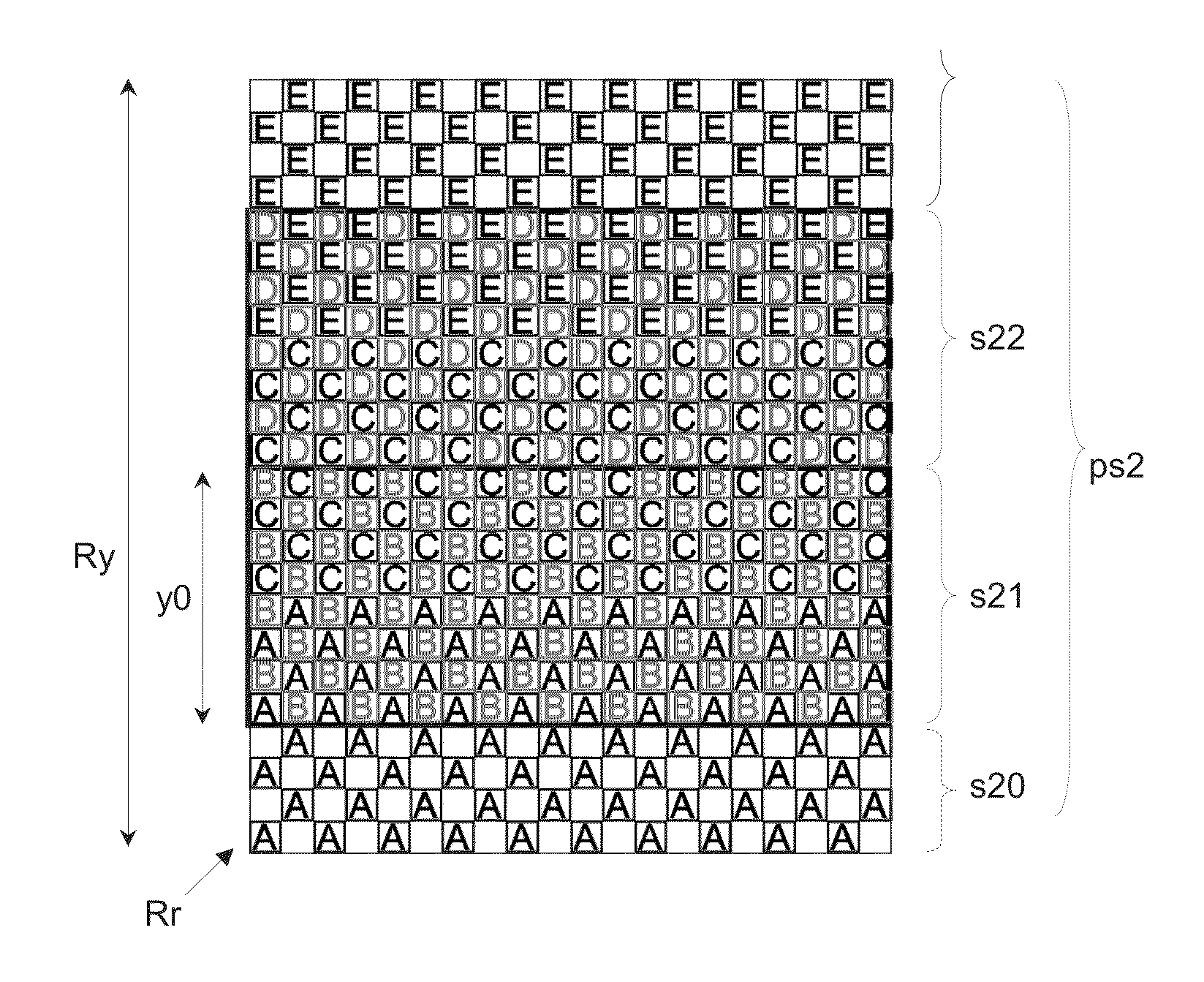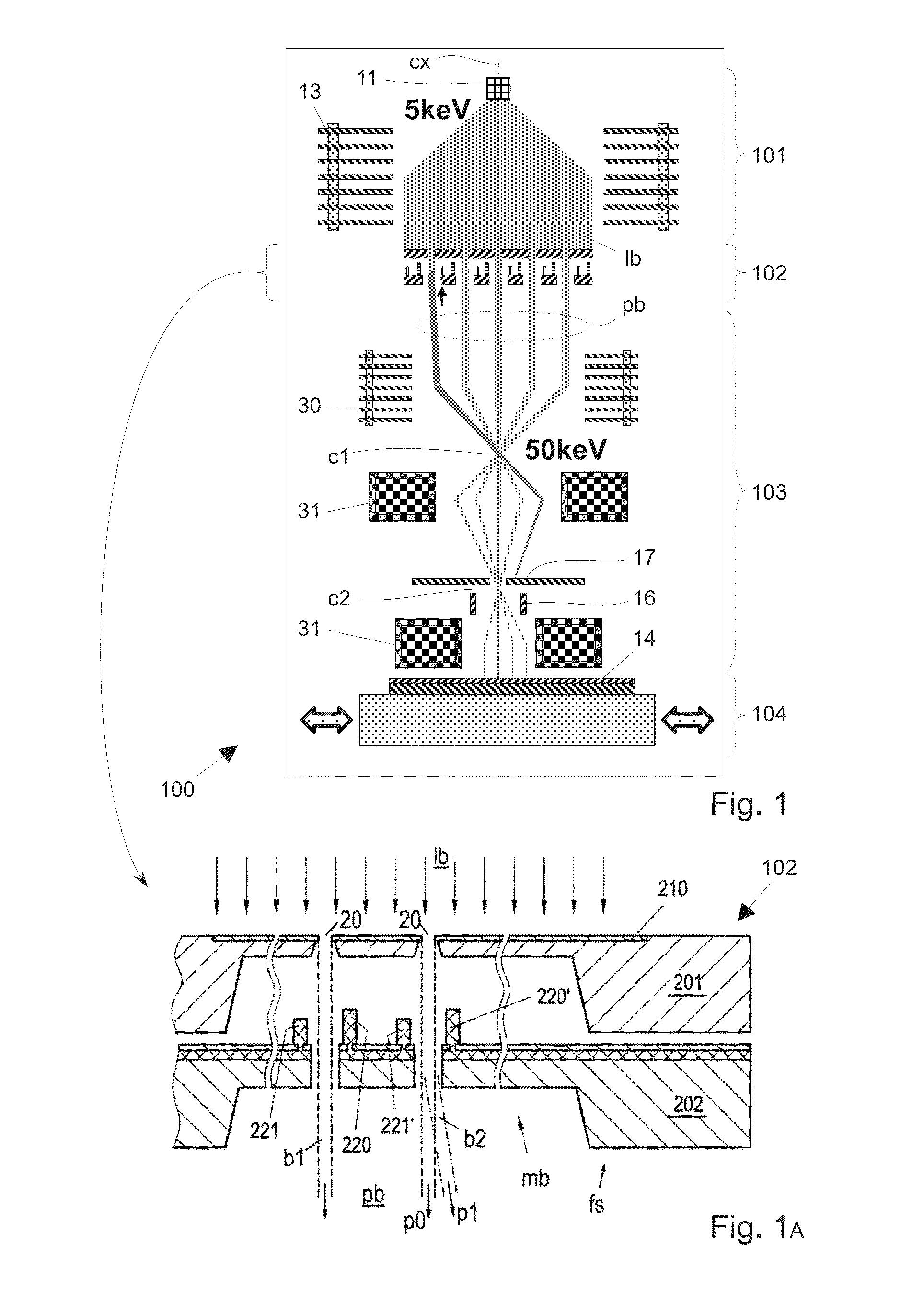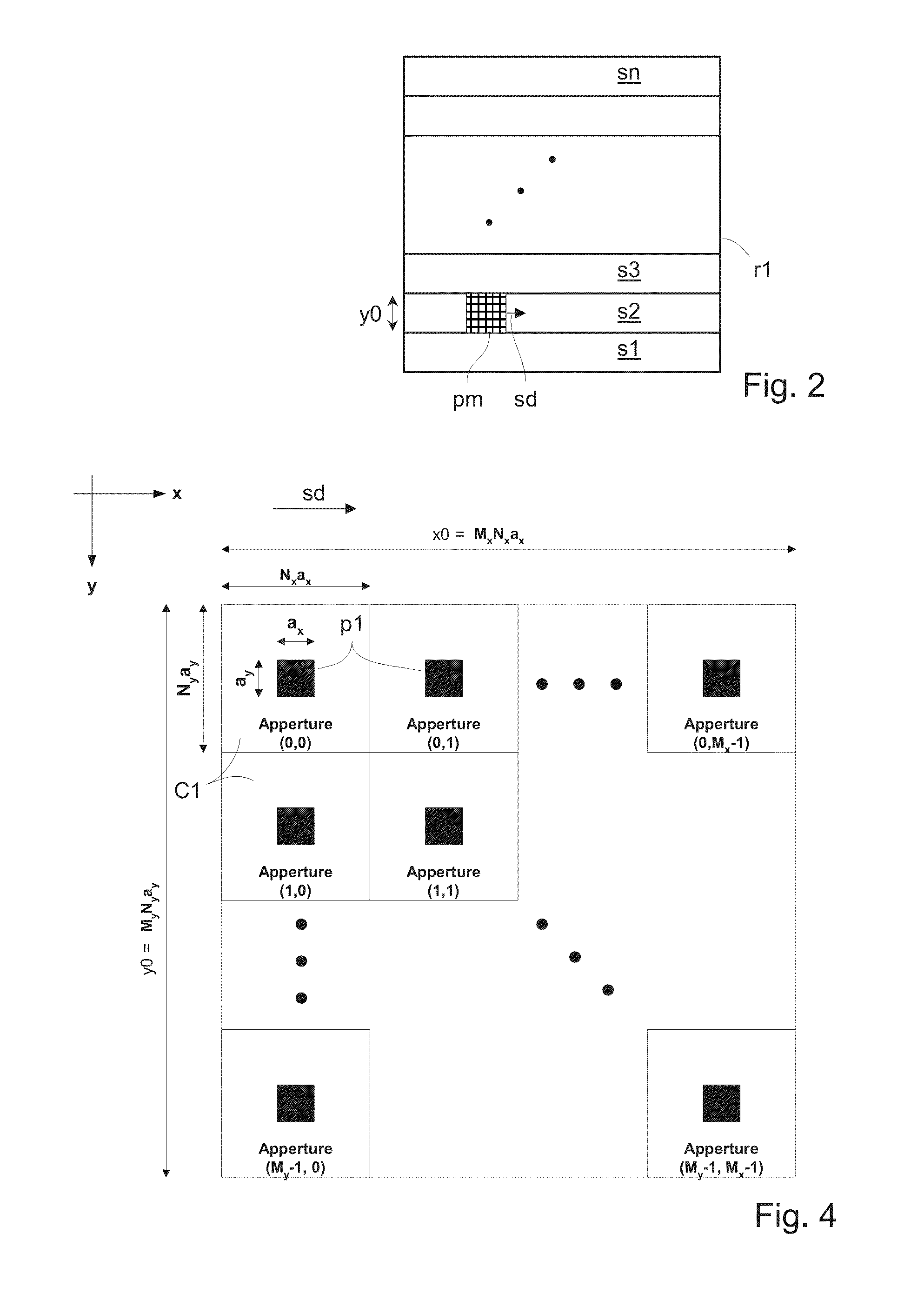Method for charged-particle multi-beam exposure
a multi-beam exposure and charged particle technology, applied in the field of charged particle multi-beam exposure, can solve the problems of increasing the number of pixels required to obtain a sufficiently good feature resolution at standard chip size, reducing the efficiency of rasterization, so as to reduce the effect of heating
- Summary
- Abstract
- Description
- Claims
- Application Information
AI Technical Summary
Benefits of technology
Problems solved by technology
Method used
Image
Examples
Embodiment Construction
[0065]One embodiment of the invention discussed in the following is a development from the particle-beam exposure apparatus of PML2 and eMET type with a pattern definition (PD) system as disclosed in U.S. Pat. No. 6,768,125 and U.S. Pat. No. 7,781,748 of the applicant, and with a large-reduction projecting system. In the following, first the technical background of the apparatus is discussed—as far as relevant to many embodiments of the invention—, then certain embodiments of the invention is presented in detail.
[0066]It should be appreciated that the invention is not restricted to the following embodiments or the particular layout of the PD system, which merely represent one of the possible applications of the invention; embodiments of the invention are suitable for other types of processing systems that use a multi-beam setup for exposure of a target.
Charged-Particle Multi-Beam System
[0067]A schematic overview of a charged-particle multi-beam mask exposure tool (mask writer) emplo...
PUM
 Login to View More
Login to View More Abstract
Description
Claims
Application Information
 Login to View More
Login to View More - R&D
- Intellectual Property
- Life Sciences
- Materials
- Tech Scout
- Unparalleled Data Quality
- Higher Quality Content
- 60% Fewer Hallucinations
Browse by: Latest US Patents, China's latest patents, Technical Efficacy Thesaurus, Application Domain, Technology Topic, Popular Technical Reports.
© 2025 PatSnap. All rights reserved.Legal|Privacy policy|Modern Slavery Act Transparency Statement|Sitemap|About US| Contact US: help@patsnap.com



